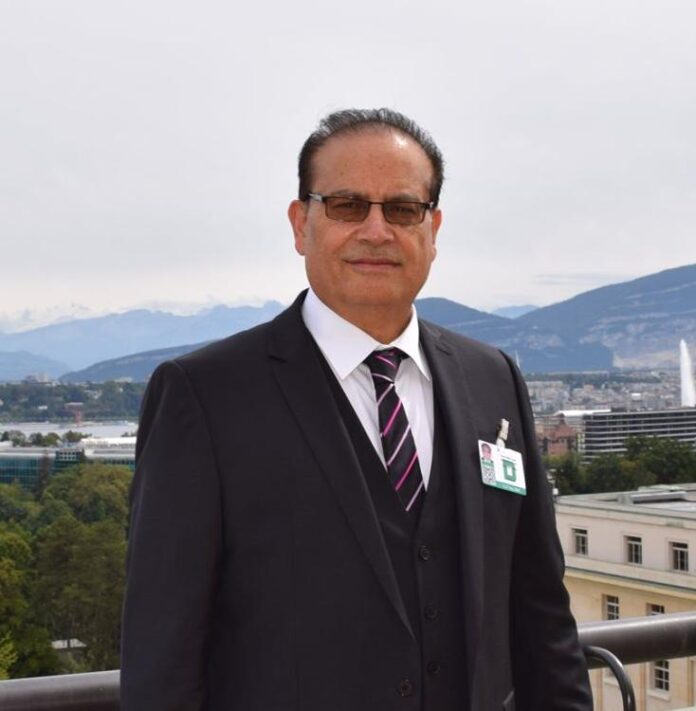Qamar Bashir
In one of the most consequential military escalations in recent South Asian history, the May 2025 conflict between India and Pakistan concluded not with a decisive proclamation of victory, but with an abrupt and uneasy ceasefire—sought under growing international pressure. Initiated by India under the pretext of retribution for the tragic terrorist attack in Pahalgam, the confrontation ended with Pakistan not only holding its ground militarily, but emerging diplomatically strengthened and strategically vindicated.
CNN’s Nic Robertson, reporting from Islamabad, offered a compelling account of Pakistan’s response to India’s deep airstrikes. He described it as a “relentless barrage of missiles and rockets” launched against Indian military targets across the Line of Control and into mainland India, targeting airbases, depots, and command structures with striking precision. Robertson called it a “calibrated show of strength” that reversed India’s offensive momentum and compelled New Delhi to urgently seek international mediation. His report echoed the sentiment that Pakistan’s counteroffensive had significantly altered the trajectory of the conflict and revealed serious gaps in India’s preparedness.
The ceasefire, brokered with the active involvement of U.S. Secretary of State Marco Rubio and Vice President JD Vance, culminated in a statement from President Donald J. Trump on his Truth Social platform:
“I am very proud of the strong and unwaveringly powerful leadership of India and Pakistan… Millions of good and innocent people could have died… I am proud the USA was able to help you arrive at this historic and heroic decision… Additionally, I will work with you both to see if, after a ‘thousand years,’ a solution can be arrived at concerning Kashmir.”
This marked a rare and notable moment—an American president publicly acknowledging Kashmir as the core issue and proposing to facilitate a long-term solution. For Pakistan, this was a diplomatic breakthrough, bringing to the fore a demand it had made for decades: international engagement on Kashmir. For India, it was an abrupt strategic recalibration, revealing the limits of unilateral aggression and the price of escalation in a nuclear environment.
India’s invocation of the Kashmir issue during back-channel negotiations signaled a significant shift. Having long resisted third-party involvement, India found itself using Kashmir as a bargaining lever to draw Pakistan into accepting U.S.-mediated talks. The irony was not lost on observers: India had inadvertently internationalized the very issue it had always insisted was bilateral.
Public sentiment in India reflected growing disillusionment. Social media platforms were awash with criticism of Prime Minister Narendra Modi and Defence Minister Rajnath Singh. Many accused the government of dragging the nation into a conflict it could neither win nor sustain. A widely circulated post read:
“You couldn’t protect Indians. You couldn’t avenge their deaths. More Indians died in the crossfire. Why are you still in office?”
Another stated:
“India was so shocked by Pakistan’s military response, it had to beg Trump for a ceasefire. Don’t provoke a war you can’t manage.”
The backlash highlighted a growing credibility gap between India’s military rhetoric and its battlefield realities. Analysts from leading global outlets offered similar assessments. The Guardian termed the war a “miscalculated gamble” that ended in embarrassment for India. France 24 questioned the performance of India’s Rafale fleet after reports confirmed the downing of three by Chinese-origin jets. Al Jazeera highlighted the precision of Pakistan’s counterstrikes, while the BBC noted how India’s attempt to project strength backfired, leading to diplomatic retreat and external mediation.
Technologically, the mismatch was stark. Pakistan’s use of Chinese J-10CE and JF-17 Thunder jets, armed with PL-15 long-range missiles, displayed integrated network warfare capabilities. India’s multi-sourced fleet—combining French, Russian, and Israeli platforms—suffered from lack of system-wide coordination. This disparity contributed to India’s failure to repel deep strikes and safeguard critical infrastructure, including forward airbases and missile systems in Adampur.
Estimates from defense correspondents suggest at least five Indian aircraft were downed, including three Rafales. Pakistan’s deep penetration—reportedly 200 km into Indian territory—without interception, further dented the credibility of India’s air defense.
Symbolically, India’s perception as the “net security provider” in South Asia took a serious hit. Its attempt to display dominance instead exposed operational vulnerabilities and forced an unwanted climbdown. Conversely, Pakistan’s firm yet controlled response helped restore deterrence, drew international empathy, and opened diplomatic pathways that had long been closed.
Think tanks responded swiftly. The Council on Foreign Relations noted that “India’s effort to assert dominance has backfired, exposing strategic weaknesses.” The International Institute for Strategic Studies (IISS) observed that “Pakistan has demonstrated battlefield coherence, technological integration, and strategic restraint.”
Within India, the political consequences may be far-reaching. The ruling BJP, already facing domestic challenges, now confronts criticism over its handling of national security. The opposition is likely to seize on the events as a turning point in public confidence, particularly among young voters who have grown increasingly skeptical of nationalist bluster.
Though the war lasted just a few days, its implications will reverberate far longer. Pakistan demonstrated not only its military resolve but also its growing stature as a rational and capable state actor. It forced a reevaluation of strategic assumptions in the region and made clear that peace in South Asia hinges not on rhetoric, but on addressing long-standing disputes—beginning with Kashmir.
The May 2025 conflict has redrawn the strategic contours of the subcontinent. For Pakistan, it was not just a matter of defending its borders, but of asserting its place on the regional and global stage. For India, it was a sobering lesson in the limits of power projection without preparation.
Qamar Bashir
Press Secretary to the President (Rtd)
Former Press Minister at Embassy of Pakistan to France
Former MD, SRBC
Macomb, Detroit, Michigan, USA

















